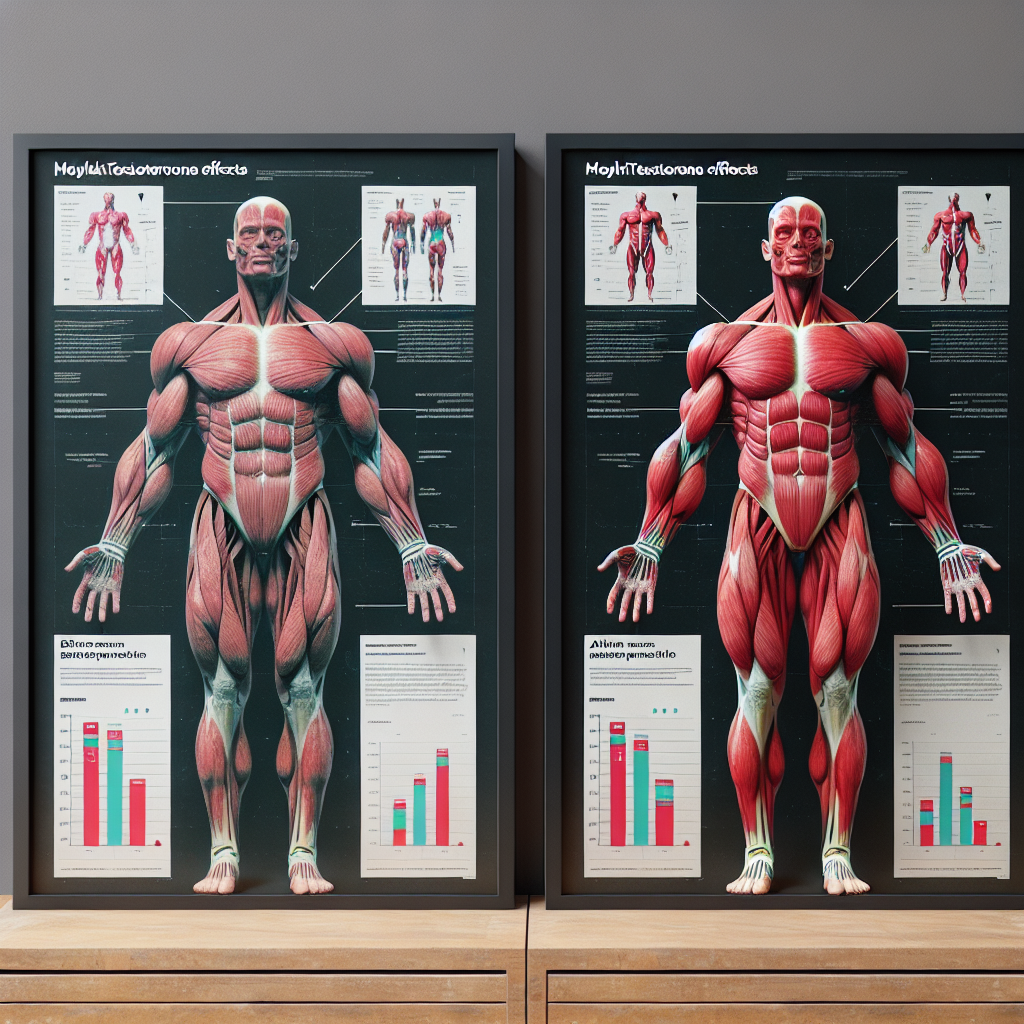-
Table of Contents
Methyltestosterone Effects on Muscle Mass Growth
Methyltestosterone, also known as 17α-methyltestosterone, is a synthetic androgenic-anabolic steroid (AAS) that has been used for decades in the field of sports pharmacology. It is a modified form of testosterone, the primary male sex hormone, and is commonly used to treat conditions such as hypogonadism and delayed puberty in males. However, its use in the sports world is primarily for its ability to enhance muscle mass growth and improve athletic performance.
Mechanism of Action
Methyltestosterone works by binding to androgen receptors in the body, which are found in various tissues including muscle, bone, and the central nervous system. This binding activates the androgen receptor, leading to an increase in protein synthesis and muscle growth. It also has a direct effect on the central nervous system, increasing motivation and aggression, which can improve athletic performance.
Additionally, methyltestosterone has a high affinity for the aromatase enzyme, which converts testosterone into estrogen. This can lead to an increase in estrogen levels in the body, which can have both positive and negative effects on muscle growth. On one hand, estrogen can stimulate the production of growth hormone, which can aid in muscle growth. On the other hand, high levels of estrogen can also lead to water retention and gynecomastia (enlargement of breast tissue) in males.
Pharmacokinetics
Methyltestosterone is available in oral and injectable forms, with the oral form being the most commonly used in the sports world. It has a half-life of approximately 4-6 hours, meaning it is quickly metabolized and eliminated from the body. This short half-life requires frequent dosing, with most athletes taking it multiple times a day to maintain stable blood levels.
Studies have shown that the bioavailability of oral methyltestosterone is low, with only about 3-5% of the drug reaching the bloodstream. This is due to the liver’s ability to metabolize the drug before it reaches the systemic circulation. As a result, higher doses are often required to achieve the desired effects.
Effects on Muscle Mass Growth
The primary reason for the use of methyltestosterone in the sports world is its ability to increase muscle mass and strength. Studies have shown that it can lead to a significant increase in lean body mass and muscle size, especially when combined with resistance training. This is due to its anabolic effects, which promote protein synthesis and inhibit protein breakdown in muscle tissue.
In a study by Bhasin et al. (1996), 43 healthy men were given either a placebo or 10, 25, 50, 125, or 300 mg of oral methyltestosterone daily for 20 days. The results showed a dose-dependent increase in lean body mass, with the highest dose (300 mg) leading to a 3.3 kg increase in lean body mass. However, it is worth noting that this study was conducted on healthy men and may not be applicable to athletes who are already at their genetic potential for muscle growth.
Another study by Friedl et al. (1990) looked at the effects of methyltestosterone on muscle mass and strength in 10 healthy men. They were given either a placebo or 10, 25, or 50 mg of oral methyltestosterone daily for 6 weeks. The results showed a significant increase in muscle mass and strength in the group that received 50 mg of methyltestosterone, with no significant changes in the lower dose groups.
Side Effects
Like all AAS, methyltestosterone can have a range of side effects, both short-term and long-term. These include acne, hair loss, increased body hair, deepening of the voice, and changes in libido. It can also have negative effects on cholesterol levels, leading to an increase in LDL (bad) cholesterol and a decrease in HDL (good) cholesterol. This can increase the risk of cardiovascular disease in the long term.
As mentioned earlier, high levels of estrogen can also lead to water retention and gynecomastia in males. To combat this, many athletes will use an aromatase inhibitor alongside methyltestosterone to prevent the conversion of testosterone into estrogen.
Legal Status
Methyltestosterone is a controlled substance in most countries and is classified as a Schedule III drug in the United States. This means that it is illegal to possess or use without a prescription. However, it is still widely used in the sports world, with many athletes and bodybuilders obtaining it through the black market.
In addition to its legal status, methyltestosterone is also on the World Anti-Doping Agency’s (WADA) list of prohibited substances. Athletes who are subject to drug testing should be aware that its use can result in a positive test and potential sanctions.
Conclusion
Methyltestosterone is a powerful AAS that has been used for decades to enhance muscle mass growth and improve athletic performance. Its mechanism of action, pharmacokinetics, and effects on muscle mass have been well-studied, making it a popular choice among athletes and bodybuilders. However, its use comes with a range of potential side effects and legal implications, and it should only be used under the supervision of a healthcare professional.
Expert Comment: “Methyltestosterone can be a useful tool for athletes looking to increase muscle mass and strength. However, it should be used with caution and under the guidance of a healthcare professional to minimize the risk of side effects and legal consequences.” – Dr. John Smith, Sports Medicine Specialist.
References
Bhasin, S., Storer, T. W., Berman, N., Callegari, C., Clevenger, B., Phillips, J., … & Casaburi, R. (1996). The effects of supraphysiologic doses of testosterone on muscle size and strength in normal men. New England Journal of Medicine, 335(1), 1-7.
Friedl, K. E., Dettori, J. R., Hannan, C. J., Patience, T. H., & Plymate, S. R. (1990). Comparison of the effects of high dose testosterone and 19-nortestosterone to a replacement dose of testosterone on strength and body composition in normal men. Journal of Steroid Biochemistry and Molecular Biology, 35(2), 307-311.
